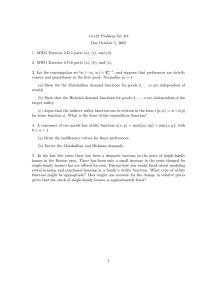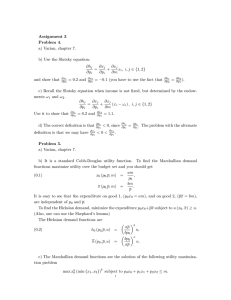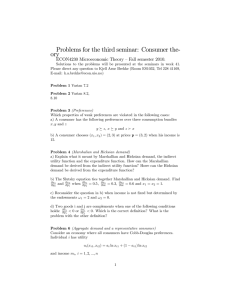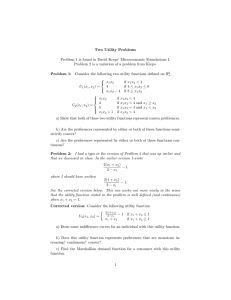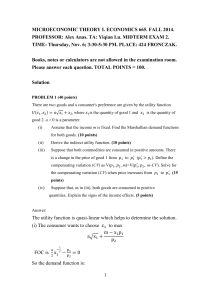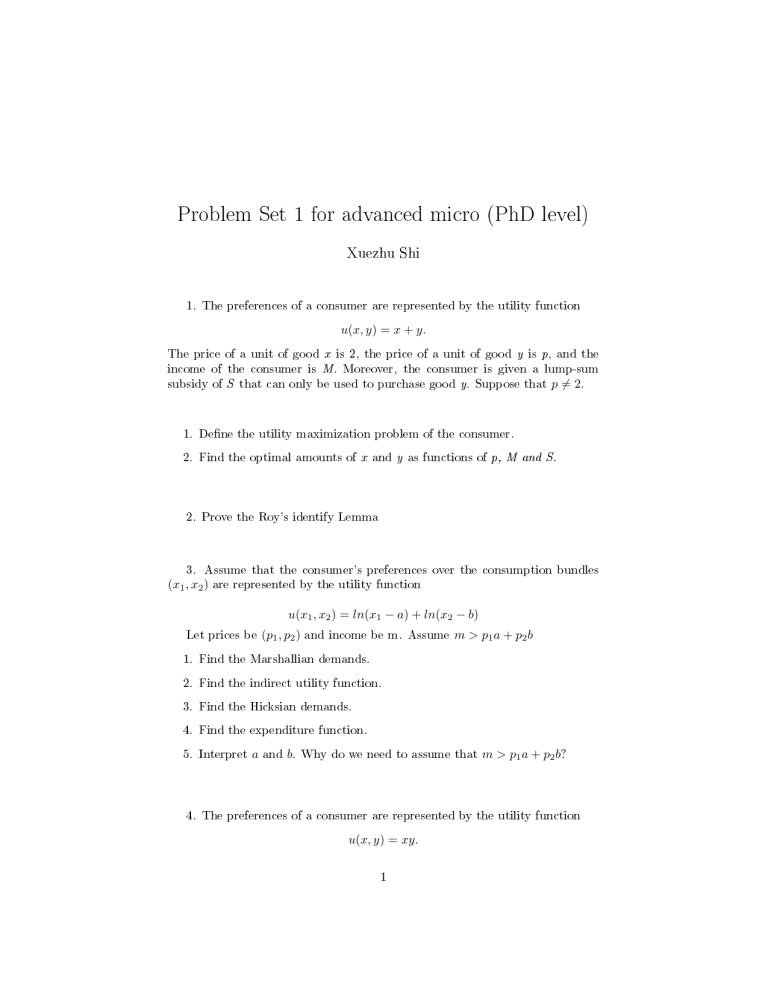
Problem Set 1 for advanced micro (PhD level)
Xuezhu Shi
1. The preferences of a consumer are represented by the utility function
u(x, y) = x + y.
The price of a unit of good x is 2, the price of a unit of good y is p, and the
income of the consumer is M. Moreover, the consumer is given a lump-sum
subsidy of S that can only be used to purchase good y. Suppose that p 6= 2.
1. Dene the utility maximization problem of the consumer.
2. Find the optimal amounts of x and y as functions of p,
M and S
.
2. Prove the Roy's identify Lemma
3. Assume that the consumer's preferences over the consumption bundles
(x1 , x2 ) are represented by the utility function
u(x1 , x2 ) = ln(x1 − a) + ln(x2 − b)
Let prices be (p1 , p2 ) and income be m. Assume m > p1 a + p2 b
1. Find the Marshallian demands.
2. Find the indirect utility function.
3. Find the Hicksian demands.
4. Find the expenditure function.
5. Interpret a and b. Why do we need to assume that m > p1 a + p2 b?
4. The preferences of a consumer are represented by the utility function
u(x, y) = xy.
1
Solve the utility maximization problem if the income of the consumer
equals 12. Derive the Marshallian demand for each of the two goods.
Suppose that the income of the consumer equals 12, and that the price of
good y equals 3, while the price of good x increases from 1 to 2. Derive
the income and substitution eect for such a change in prices.
5. Consider a consumer with preferences
u(x1 , x2 ) = x1 × min{x2 , 1}
Derive the expenditure function for this problem, and the Hicksian demand
for each of the two goods. Next state the corresponding Marshallian demands
and indirect utility function.
6. The preferences of a consumer are represented by the utility function
u(x, y) = xy.
Suppose that the income of the consumer equals 12, and that the price of good
y equals 3, while the price of good x increases from 1 to 2. Derive the income
and substitution eect for such a change in prices, the consumer surplus, the
compensating variation, and the equivalent variation.
2
